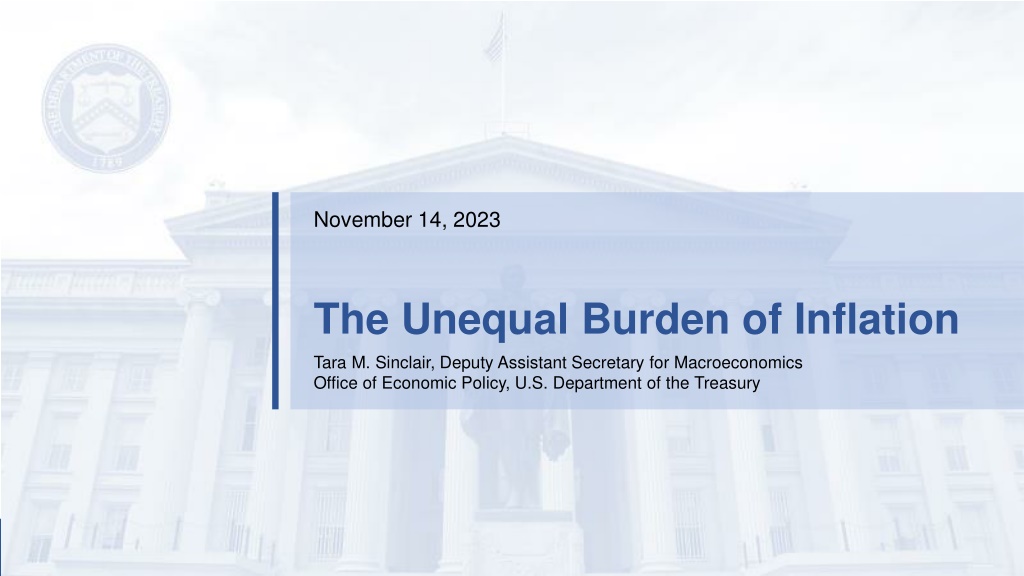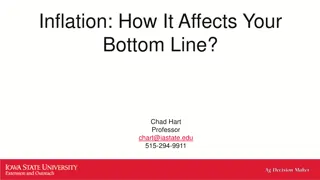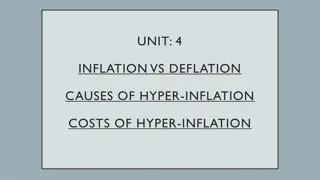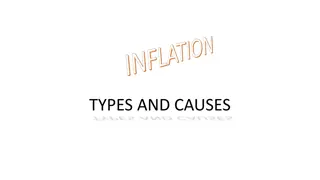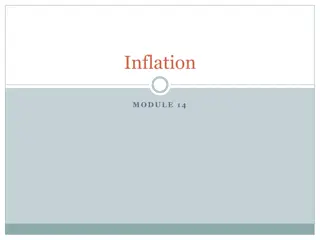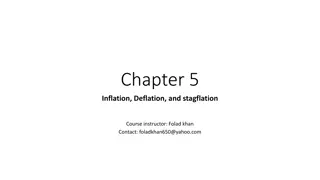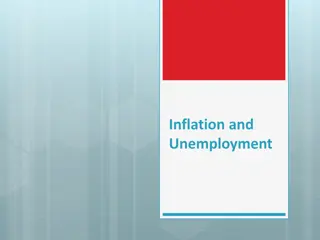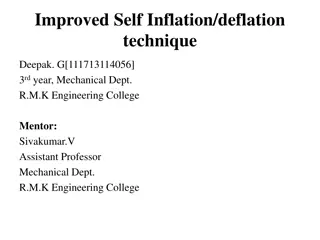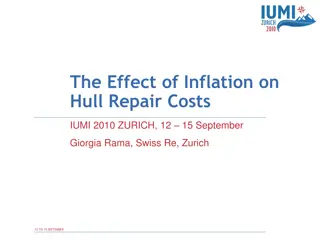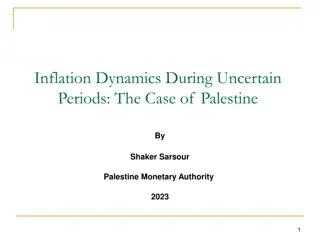Understanding the Unequal Impact of Inflation on Different Socioeconomic Groups
Inflation affects different households unevenly, with poorer households experiencing faster price growth due to various factors like innovation and expenditure capabilities. The distributional effects are further influenced by economic recovery, leading to implications on real hourly wage growth and wealth distribution. Despite an equitable recovery in real terms, challenges persist in addressing the unequal burdens of inflation and its broader distributional issues.
Download Presentation

Please find below an Image/Link to download the presentation.
The content on the website is provided AS IS for your information and personal use only. It may not be sold, licensed, or shared on other websites without obtaining consent from the author. Download presentation by click this link. If you encounter any issues during the download, it is possible that the publisher has removed the file from their server.
E N D
Presentation Transcript
November 14, 2023 The Unequal Burden of Inflation Tara M. Sinclair, Deputy Assistant Secretary for Macroeconomics Office of Economic Policy, U.S. Department of the Treasury 1
Unequal Experience of Inflation Poorer households tend to see faster price growth (Jaravel, 2021) Firms innovate more on goods purchased by richer households, reducing their quality-adjusted prices (Jaravel, 2019) Choice set for wealthier households is larger so it is easier to shift expenditures in response to price changes (Argente and Lee, 2020) Wealthier households engage in more sophisticated saving and investment behavior that protects them from inflation (Doepke and Schneider, 2006) Source: Jaravel (2021) 2
Inflation in Context Real Hourly Wage Growth The distributional effects of inflation do not occur in a vacuum There are also distributional effects from a weak economic recovery: more child poverty, more hunger, more housing instability, poorer labor market outcomes We had a remarkably strong recovery from the COVID recession with compression in the real wage distribution, even after accounting for price growth differentials between lowest and highest earners 8 6 4 2 0 -2 -4 -6 -8 10th Percentile 90th Percentile Unadjusted Adjusted Source: Autor, Dube, and McGrew (2023), Jaravel (2021), and author s calculations 3
Equitable Recovery Labor Markets: The gaps between Black/white and Hispanic/white unemployment rates have closed substantially, dropping to near their historic lows in 2023. Income: Median real hourly wages have risen substantially for low-wage workers (Autor, Dube, and McGrew 2023). Wealth: Household net worth has risen faster for poorer households during the recovery from the pandemic recession. This is rare, historically. Real Net Worth Growth by Recovery 15 10 5 0 -5 -10 2007 2020 25 49.9 50 74.9 75 89.9 90 100 Source: Federal Reserve Board 4
Conclusion Distributional effects are complicated, and we need to be careful of Innocent Bystanders (Coibion et al., 2017) It s important to remember that we ve had an equitable recovery in real terms, meaning accounting for inflation We still need further research on the causes of the recent inflationary episode and on how to assess the broader distributional issues Policy in the face of unequal burdens of inflation is a challenge For example, redistribution to offset the unequal impacts of inflation might fan the flames of inflation by redistributing toward households with a higher marginal propensity to consume 5
